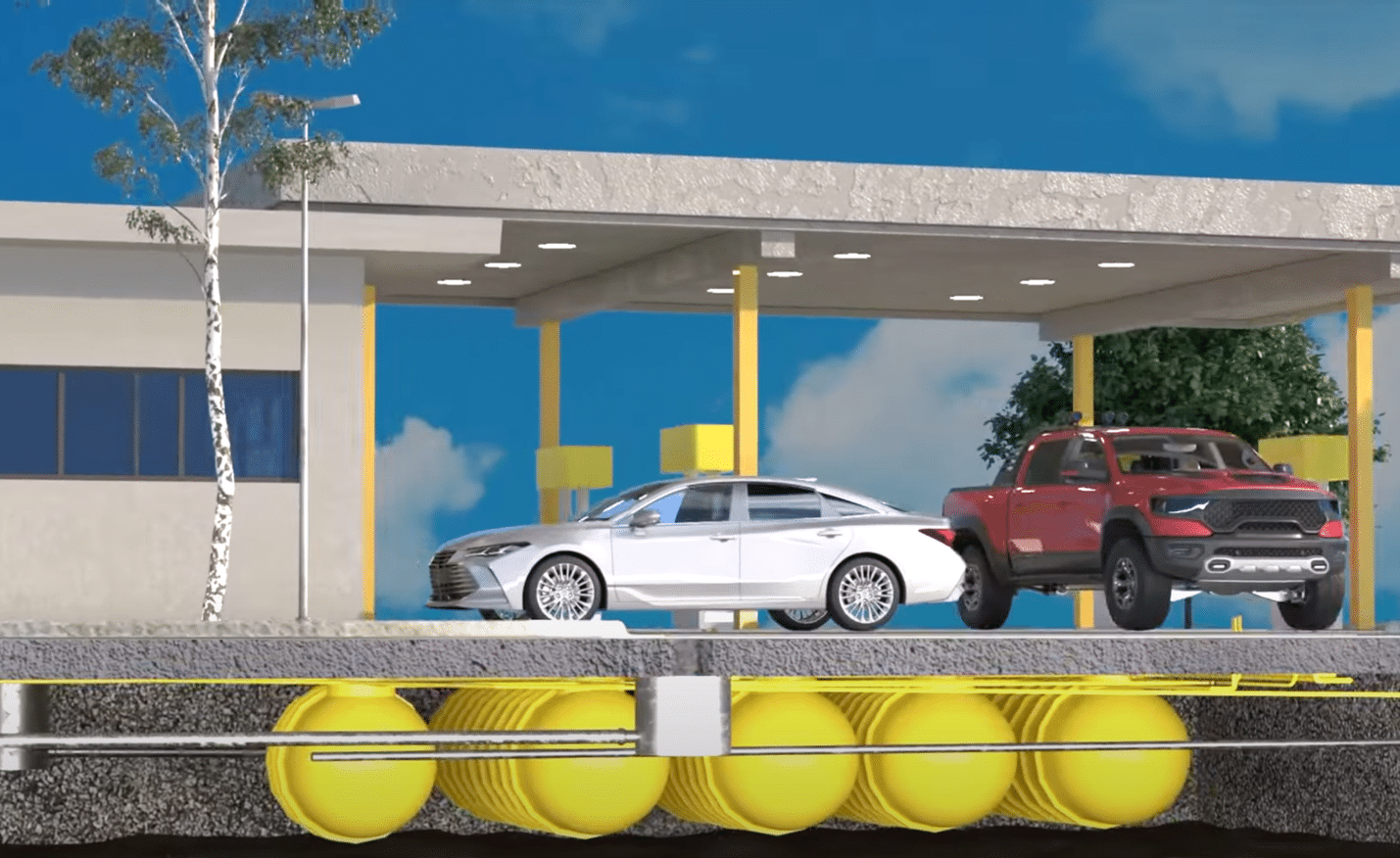Underground Storage Tanks (USTs) play a critical role in various industries, particularly in storing petroleum products and hazardous substances.
But when these tanks deteriorate, leak, or are improperly managed, they pose significant environmental and health risks.
Leaking Underground Storage Tanks (LUSTs) are a primary concern for property owners, developers, and environmental regulators because of their potential to contaminate soil and groundwater.

USTs are tanks and associated piping buried underground to store petroleum or other hazardous substances.
What are Underground Storage Tanks (USTs)?
Underground Storage Tanks (USTs) are tanks and connected pipes placed below ground to hold petroleum or other hazardous materials. They’re commonly located at gas stations, industrial sites, commercial properties, and government facilities. To protect the environment and prevent leaks, USTs must be properly designed, installed, and maintained.
Key Components of UST Systems:
- Tanks: The primary storage vessel, typically made from steel, fiberglass, or composite materials.
- Piping Systems: Transport fuel from the tank to dispensing units.
- Leak Detection Systems: Monitors and alarms that detect fuel leakage.
- Cathodic Protection: A method used to prevent corrosion in metal tanks.
- Overfill Protection: Systems that prevent spills during fuel transfer.
Although modern USTs are built with strict safety standards, older tanks—particularly those installed before current regulations were in place—are more likely to corrode, fail structurally, and leak.
What are Leaking Underground Storage Tanks (LUSTs)?
LUSTs happen when underground tanks crack, rust, or break down due to mechanical or structural problems. These leaks can allow hazardous substances to seep into nearby soil and groundwater, causing serious environmental damage.
Causes of LUSTs
- Corrosion: Older steel tanks are prone to rust, leading to leaks.
- Structural Failure: Pressure changes and environmental stressors can cause tank deterioration.
- Improper Installation: Poor installation techniques may contribute to early failure.
- Accidental Damage: Construction and excavation activities can rupture tanks or piping.
- Neglected Maintenance: Lack of routine inspection and repair increases the risk of leaks.

Underground Storage Tanks (USTs) play a critical role in various industries, particularly in storing petroleum products and hazardous substances. But when these tanks deteriorate, leak, or are improperly managed, they pose significant environmental and health risks.
Environmental and Health Risks of LUSTs
Leaking USTs pose severe environmental and public health risks, including:
- Soil Contamination: Hazardous substances seep into the ground, affecting plant life and ecosystems.
- Groundwater Pollution: Contaminants such as benzene, toluene, and MTBE can enter underground water supplies, making them unsafe for consumption.
- Air Quality Issues: Volatile organic compounds (VOCs) from fuel leaks can evaporate and pose inhalation hazards.
- Fire and Explosion Hazards: Underground fuel leaks can create flammable vapor pockets.
- Legal and Financial Liabilities: Property owners may face regulatory penalties, lawsuits, and costly cleanup operations.
Regulatory Framework for USTs and LUSTs
In the United States, the Environmental Protection Agency (EPA) oversees USTs under the Resource Conservation and Recovery Act (RCRA). These regulations set rules for preventing leaks, detecting problems, and taking corrective actions when issues arise.
Key regulatory requirements include:
- Tank Registration and Monitoring: All USTs must be registered, and owners must implement leak detection systems.
- Operator Training and Inspection: Regular inspections and maintenance are mandatory.
- Corrective Action for Contaminated Sites: Cleanup efforts must follow EPA and state guidelines to remediate environmental damage.
- Closure and Removal Requirements: If an UST is no longer in use, it must be properly decommissioned or removed.
Detection and Remediation of LUST Sites
When a LUST is suspected, environmental consultants conduct site assessments to determine the extent of contamination. The remediation process typically involves:
- Phase I Environmental Site Assessment (ESA): Identifies Recognized Environmental Conditions (RECs) based on historical and visual site inspections.
- Phase II ESA:
- Site Remediation: Depending on contamination severity, cleanup methods may include:
- Soil Excavation and Disposal: Removing contaminated soil.
- Groundwater Treatment: Pumping and treating contaminated water.
- Vapor Intrusion Mitigation: Installing vapor barriers to prevent indoor air contamination.
- Bioremediation: Using natural bacteria to break down contaminants.
How SiteMap® Expedites LUST Detection and Remediation
GPRS’ nationwide team of SIM-certified Project Managers utilize industry-leading technology such as ground penetrating radar (GPR) and electromagnetic (EM) locating to assist with the detection and remediation of LUST sites.
Our precision utility locating and NASSCO-certified Video Pipe Inspection services ensure that all proposed locations for soil borings, groundwater monitoring wells, and soil vapor pins are clear of underground obstructions before drilling. GPS mapping of these utility findings and sample locations is included with every project.
If contamination of soil, groundwater, or soil gas is detected above cleanup thresholds, further investigation may be required to confirm there are no exposure pathways or to address remediation needs. With detailed maps from the initial investigation, GPRS can efficiently locate prior sample sites, conduct utility restakes, and assess whether nearby utilities could serve as contamination migration pathways.
All this critical, field-verified data is at your fingertips 24/7 thanks to SiteMap® (patent pending), GPRS’ project & facility management application that provides accurate existing conditions documentation to protect your assets and people.
SiteMap® is a single source of truth for the data you need to plan, design, manage, dig, and ultimately build better. Securely accessible from any computer, tablet, or smartphone, it allows you and your team to mitigate the risk of mistakes caused by miscommunications.
Click below to schedule your live, personal SiteMap® demo today!
